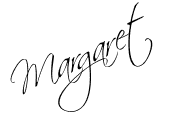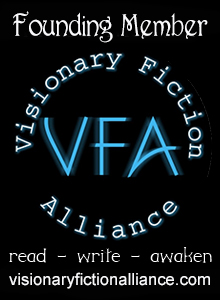
No matter how advanced you are as a writer, it never hurts to take one last look at your manuscript before sending it off to an agent or editor. And Manuscript Makeover, by Elizabeth Lyon, is just the book to help you do it.
Lyon spent the last twenty years teaching writing and mentoring writers in classes, critique groups, and through her editing services. Manuscript Makeover is a distillation of what she has learned in the process.
The parts of this book that will benefit you most will depend on the areas of craft you most want or need to work on. The idea is to customize the techniques to meet your individual needs.
Chapter One (Inside-Out: The Voice of Style) has a section on riff-writing meant expressively for the revision process. You already have your story ready to go, and riff writing can help you expand your imagination around a particular problem or need, such as adding images and developing more characterization.
Chapter Five (Whole Book: Five-Stage Structure) lists the most common traps writers fall into when crafting story problems. I especially like the chapter’s sidebars and Makeover Revision Checklist for what can go wrong and how to fix it.
Chapter Eleven (Character-Driven Beginnings) helps you define your story goals (outer and inner) in concrete terms so that the reader always knows how close or far the hero is from reaching them. It also urges you to make clear what of value and importance will be lost or gained should the hero fail or succeed.
Chapter Twelve (Character-Driven Scenes and Suspense) gives one of the best explanations of subtext I’ve come across to date. It also goes into detail about showing character feelings as expressed by the body, using sensory reactions.
As you can see from the short summaries above, the chapters in this book are jam-packed with ways to improve your novel, but my personal favorites are Chapters Seven, Thirteen, and Fourteen.
Chapter Seven (Movement and Suspense Techniques) deals with action and change–the heart of successful fiction. It explains the form of movement that comes from reactions in response to action, which include:
- actions in response
- thoughts/quandaries
- narration/informing
- actions within thoughts/decisions
- visceral emotions expressed by the body.
Lyon presents story problems and solutions. If your story happens to have too much action and too little reaction, for example, she suggests integrating body-generated (visceral) emotions, showing outward reactions (body language), and adding narrated emotion and thought to reveal reactions.
Chapter Thirteen (Character Personality and Voice) deals with distinctive descriptions and traits of characters. It offers suggestions on how to give your characters “attitude” and “passion,” make each of them distinct in vocabulary, idioms, phrases and sayings, etc. It offers ways to draw your characters in distinguishing detail (physical appearance and emotional/intellectual disposition). This chapter alone is worth the cost of the book.
Chapter Fourteen (Character-Driven Narration). We’re always being told, “Show, don’t tell.” However, story needs narration. Good narration. And here, Lyon shows you how to tell well.
At the end of each chapter is a manuscript makeover revision checklist covering that chapter’s revision tasks. I plan to choose one task, make the changes, and then choose another task until I’ve made it through my entire novel.
How good is that?


You really do need to read the WIP through at least twice from start to finish or have friend do it, to fine tune things. If the friend does, make it specific, like just look for grammar and spelling, otherwise no book would ever get published, for the constant changes.
True, Lee, at some point, the writer needs to bite the bullet and submit. My theory is still, better a bit late than too early.
After reading your post I went to EL's website but it was not clear to me what she expected to have a writer submit in order to get a "price" and time estimate;
She does have a lot of information on herself and what she does, why and how however when I clicked on 'outside' sites she has on her homepage, (other then on http://www.manuscriptmakeover.com where I did find how to buy her books), I didn't find anything related to the material she mentioned.
Have you used her services and if so how did you submit your work.
Hi Marta. The information you are looking for is at EDITING INTERNATIONAL. Here is their explanation of how it works: "Editing work is initiated with an e-mail or phone call to Elizabeth Lyon, describing your manuscript and your needs. Most of our is on partials of novels and nonfiction books as well as complete proposals with their sample chapters. We also edit query letters and synopses that accompany these manuscripts. Often, Elizabeth has several months of editing commitments and recommends that you reserve a spot in your calendar (after e-mail acceptance) at your earliest convenience. In other words, if you still have revisions to go or can estimate your own completion date, don't wait until that time to contact her. Once an agreement is reached and prior to initiation of the editing work, you'll be sent a contract that specifies what you will receive for what fee and retainer and by what return date. This contract, usually sent by e-mail attachment, is signed by a typed e-mail signature by both editor and author (although printed out, signed, and mailed is acceptable as well). Once the retainer and manuscript have been received by Editing International, the work begins.
Half of the fee, in U.S. dollars, is due before we begin work on your manuscript. The other half is usually due when you receive the finished package. We accept Visa and MasterCard credit cards, checks, and money orders.
** RATES: $100/hour (US currency or equivalent)"
Hi Marta. The webiste for Editing International is http://www.4-edit.com/. Click edititin and comprehensive evaluations and it will take you to: http://www.4-edit.com/services.php. Good luck.